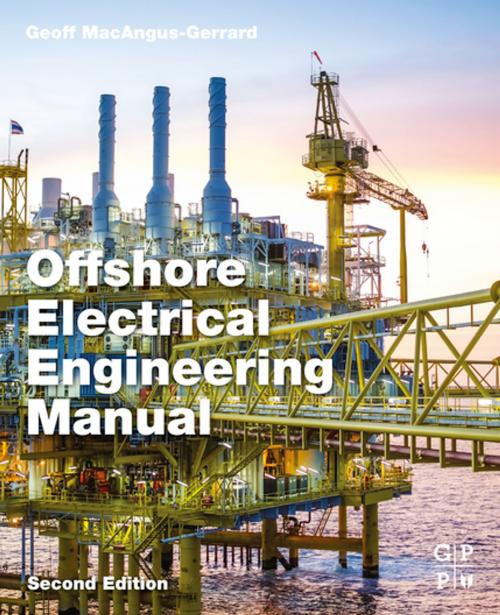Offshore Electrical Engineering Manual
Nonfiction, Science & Nature, Technology, Hydraulics, Electricity| Author: | Geoff MacAngus-Gerrard | ISBN: | 9780123854995 |
| Publisher: | Elsevier Science | Publication: | November 6, 2017 |
| Imprint: | Gulf Professional Publishing | Language: | English |
| Author: | Geoff MacAngus-Gerrard |
| ISBN: | 9780123854995 |
| Publisher: | Elsevier Science |
| Publication: | November 6, 2017 |
| Imprint: | Gulf Professional Publishing |
| Language: | English |
Offshore Electrical Engineering Manual, Second Edition, is for electrical engineers working on offshore projects who require detailed knowledge of an array of equipment and power distribution systems. The book begins with coverage of different types of insulation, hot-spot temperatures, temperature rise, ambient air temperatures, basis of machine ratings, method of measurement of temperature rise by resistance, measurement of ambient air temperature. This is followed by coverage of AC generators, automatic voltage regulators, AC switchgear transformers, and programmable electronic systems.
The emphasis throughout is on practical, ready-to-apply techniques that yield immediate and cost-effective benefits. The majority of the systems covered in the book operate at a nominal voltage of 24 y dc and, although it is not necessary for each of the systems to have separate battery and battery charger systems, the grouping criteria require more detailed discussion.
The book also provides information on equipment such as dual chargers and batteries for certain vital systems, switchgear tripping/closing, and engine start batteries which are dedicated to the equipment they supply. In the case of engines which drive fire pumps, duplicate charges and batteries are also required.
Packed with charts, tables, and diagrams, this work is intended to be of interest to both technical readers and to general readers. It covers electrical engineering in offshore situations, with much of the information gained in the North Sea. Some topics covered are offshore power requirements, generator selection, process drivers and starting requirements, control and monitoring systems, and cabling and equipment installation
- Discusses how to perform inspections of electrical and instrument systems on equipment using appropriate regulations and specifications
- Explains how to ensure electrical systems/components are maintained and production is uninterrupted
- Demonstrates how to repair, modify, and install electrical instruments ensuring compliance with current regulations and specifications
- Covers specification, management, and technical evaluation of offshore electrical system design
- Features evaluation and optimization of electrical system options including DC/AC selection and offshore cabling designs
Offshore Electrical Engineering Manual, Second Edition, is for electrical engineers working on offshore projects who require detailed knowledge of an array of equipment and power distribution systems. The book begins with coverage of different types of insulation, hot-spot temperatures, temperature rise, ambient air temperatures, basis of machine ratings, method of measurement of temperature rise by resistance, measurement of ambient air temperature. This is followed by coverage of AC generators, automatic voltage regulators, AC switchgear transformers, and programmable electronic systems.
The emphasis throughout is on practical, ready-to-apply techniques that yield immediate and cost-effective benefits. The majority of the systems covered in the book operate at a nominal voltage of 24 y dc and, although it is not necessary for each of the systems to have separate battery and battery charger systems, the grouping criteria require more detailed discussion.
The book also provides information on equipment such as dual chargers and batteries for certain vital systems, switchgear tripping/closing, and engine start batteries which are dedicated to the equipment they supply. In the case of engines which drive fire pumps, duplicate charges and batteries are also required.
Packed with charts, tables, and diagrams, this work is intended to be of interest to both technical readers and to general readers. It covers electrical engineering in offshore situations, with much of the information gained in the North Sea. Some topics covered are offshore power requirements, generator selection, process drivers and starting requirements, control and monitoring systems, and cabling and equipment installation
- Discusses how to perform inspections of electrical and instrument systems on equipment using appropriate regulations and specifications
- Explains how to ensure electrical systems/components are maintained and production is uninterrupted
- Demonstrates how to repair, modify, and install electrical instruments ensuring compliance with current regulations and specifications
- Covers specification, management, and technical evaluation of offshore electrical system design
- Features evaluation and optimization of electrical system options including DC/AC selection and offshore cabling designs















